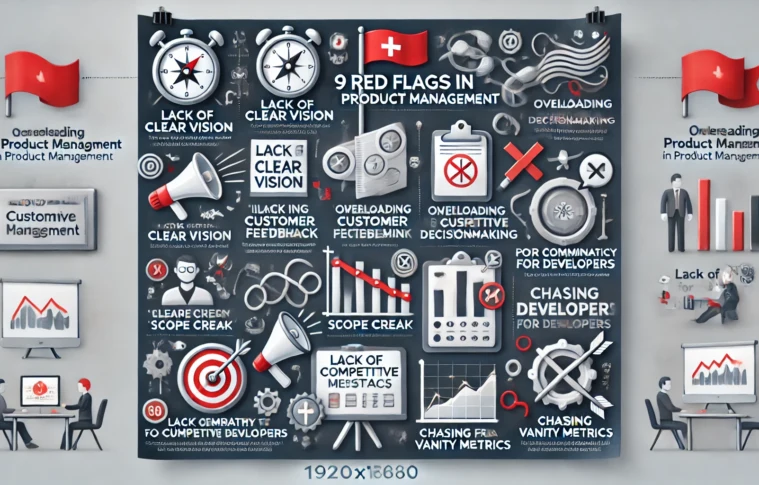Product management is the backbone of successful product development, balancing customer needs, business goals, and technical feasibility. However, even the best-intentioned product managers (PMs) can encounter challenges that derail their efforts. Identifying red flags early can save time, resources, and ensure a smoother product journey. Here are nine critical red flags in product management to watch out for:
1. Lack of Clear Vision
A product without a well-defined vision is like a ship without a compass. If the PM can’t articulate the product’s purpose and long-term goals, the team will struggle to align their efforts, leading to confusion and inefficiency.
Solution: Create and communicate a compelling product vision tied to the company’s mission and user needs.
2. Ignoring Customer Feedback
Failing to listen to customers—or worse, assuming their needs—leads to a product that solves the wrong problems. A disconnect between the team and end-users is a recipe for failure.
Solution: Regularly engage with customers through interviews, surveys, and usability testing to ensure their voice shapes the product.
3. Overloading the Roadmap
An overcrowded roadmap often indicates poor prioritization. When every feature becomes a priority, none of them get the attention they deserve, leading to mediocre outcomes.
Solution: Use prioritization frameworks like RICE (Reach, Impact, Confidence, Effort) to focus on high-value initiatives.
4. Lack of Data-Driven Decision-Making
Relying solely on intuition or anecdotal evidence to make decisions can lead to costly mistakes. Without data, PMs are essentially flying blind.
Solution: Leverage data analytics, KPIs, and customer insights to validate assumptions and guide decisions.
5. Poor Communication with Stakeholders
Misalignment between the PM and stakeholders—such as developers, marketing teams, or executives—creates friction, delays, and missed opportunities.
Solution: Foster open communication through regular updates, transparent documentation, and collaborative decision-making.
6. Scope Creep
Adding unplanned features or changes mid-project without revisiting priorities or timelines leads to delays, budget overruns, and a loss of focus.
Solution: Establish clear boundaries, document requirements, and manage changes through a controlled process.
7. Neglecting the Competitive Landscape
Failing to monitor competitors can result in products that are outdated, undifferentiated, or irrelevant.
Solution: Regularly perform competitive analysis to identify opportunities, gaps, and threats in the market.
8. Lack of Empathy for Developers
PMs who don’t consider developer constraints—like technical debt, resource limitations, or realistic timelines—can harm morale and the quality of the product.
Solution: Collaborate with the engineering team to understand challenges and create achievable plans.
9. Chasing Vanity Metrics
Focusing on metrics like downloads, clicks, or sign-ups without assessing long-term engagement or user satisfaction leads to shallow success.
Solution: Measure meaningful outcomes such as user retention, NPS (Net Promoter Score), and revenue impact.
Conclusion
Being a successful product manager means staying vigilant for these red flags and addressing them proactively. By maintaining clear communication, prioritizing customer needs, and leveraging data, PMs can navigate challenges effectively and deliver products that truly resonate with users.
Disclaimer
Posts in the Notebook are written by individual members and reflect personal insights or opinions. Please verify any information independently. If you have any concerns, notify the admin immediately so we can take action before any legal steps are taken.





